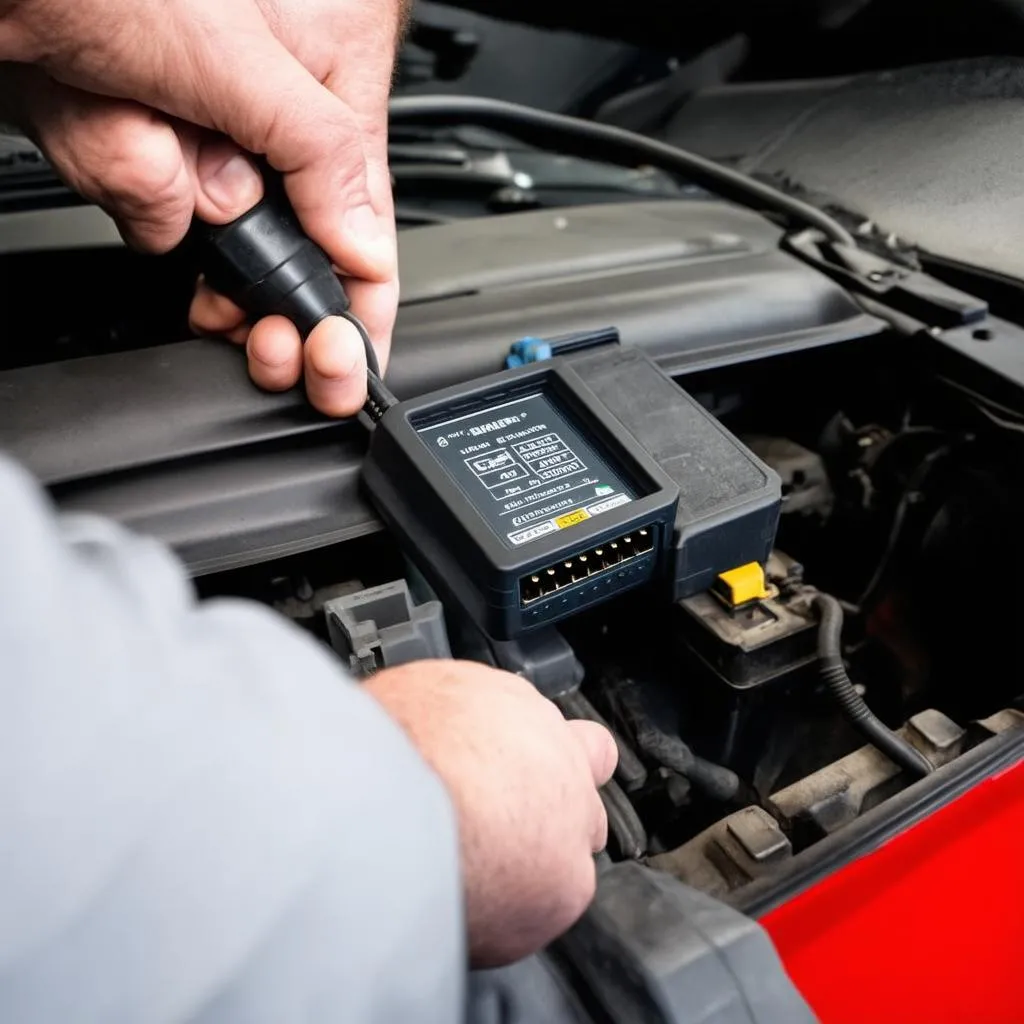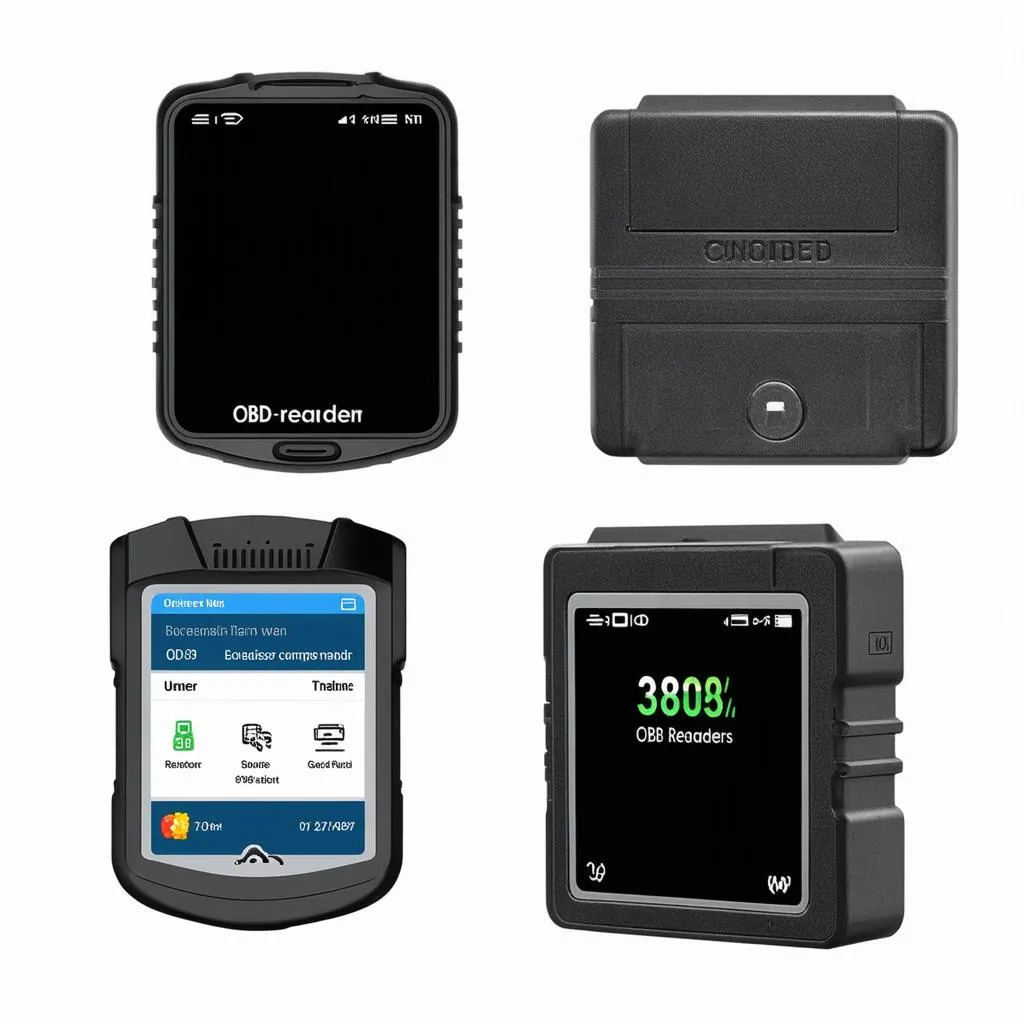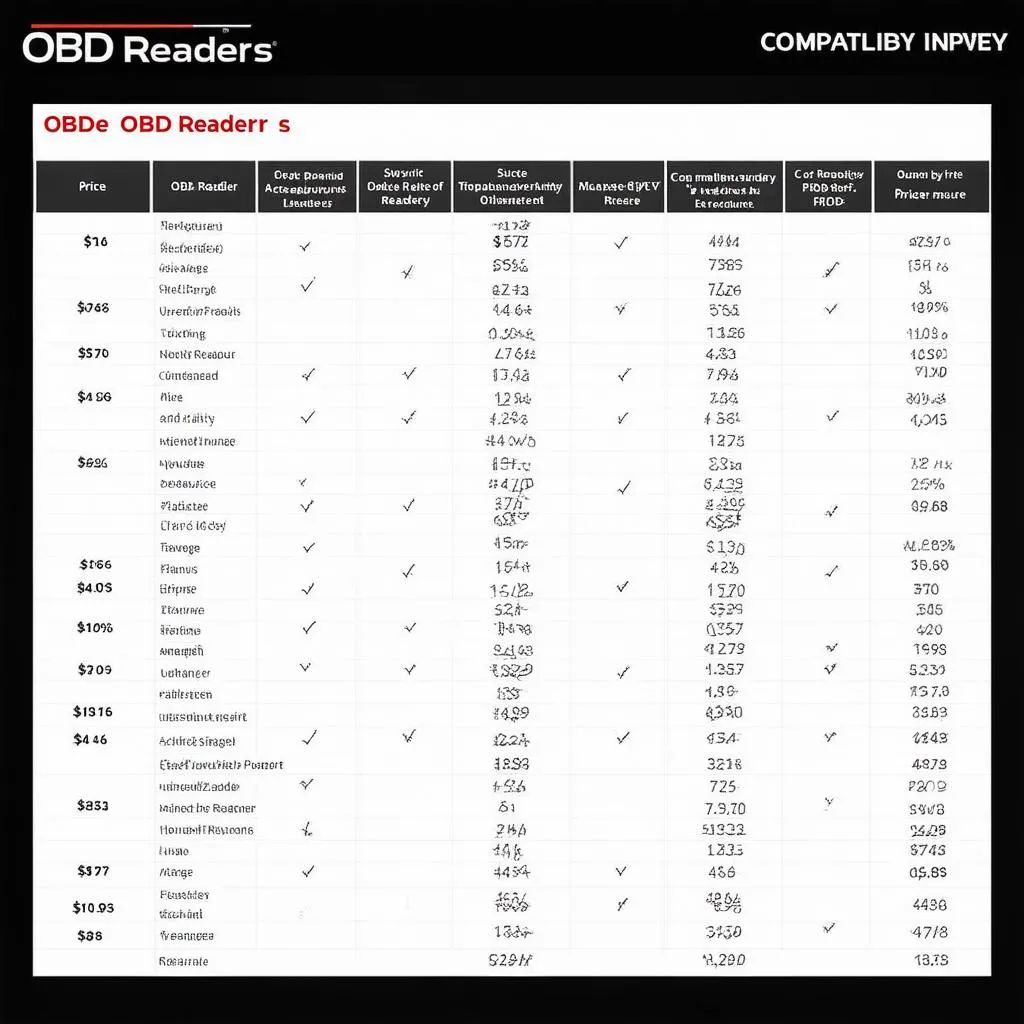“What goes around, comes around,” an old saying goes. And in the world of cars, this saying holds true for the diagnostic tools we use. Just like a good mechanic needs the right tools to repair a car, a good driver needs the right diagnostic tool to understand what’s happening under the hood. And in today’s world, that tool is often an OBD reader.
What is an OBD Reader?
An OBD (On-Board Diagnostics) reader is a small device that plugs into your car’s OBD port, which is usually located under the dashboard. This device allows you to access and interpret data from your car’s computer, giving you valuable insights into its health and performance.
Think of it like a translator for your car’s internal language. It helps you understand what your car is trying to tell you, whether it’s a warning light on the dashboard or a subtle change in engine performance.
Why You Need a Good OBD Reader
 OBD Reader Plugged In
OBD Reader Plugged In
Imagine this: You’re driving down the road, and suddenly your check engine light turns on. Your mind races with questions: What’s wrong? How much will it cost to fix? Do I need to pull over?
This is where an OBD reader comes in. With a good OBD reader, you can quickly identify the problem and take appropriate action. It can save you time, money, and unnecessary stress.
Choosing the Best OBD Reader for Your Needs
 OBD Reader Options
OBD Reader Options
The right OBD reader for you depends on your needs and budget. There are a wide variety of OBD readers available, ranging from simple, budget-friendly models to more advanced, feature-rich devices. Here are some key considerations:
1. Compatibility:
- OBD II Protocol: Make sure the reader is compatible with your car’s OBD II protocol. Most cars made after 1996 are OBD II compliant.
- Specific Vehicle Makes and Models: Some readers are designed to work with specific vehicle makes and models. If you’re looking for a reader that can diagnose a wide range of vehicles, choose one with broader compatibility.
- International Standards: Check if the reader is compatible with international standards like EOBD (European OBD) or JOBD (Japanese OBD) if you’re looking to use it on cars from different regions.
2. Features:
- Code Reading and Clearing: All OBD readers should be able to read and clear diagnostic trouble codes (DTCs).
- Live Data Streaming: Advanced readers can provide real-time data streams for engine performance, sensor readings, and other parameters.
- Data Logging: Some readers can log data for later analysis, helping you track trends and identify potential problems early on.
- Advanced Functions: Some readers offer additional features like ECU programming, service light resets, and other advanced functionalities.
3. Ease of Use:
- Interface: Choose a reader with a user-friendly interface that is easy to navigate and understand.
- Connectivity: Consider the connectivity options available, such as Bluetooth, WiFi, or USB. Bluetooth connectivity is convenient for wireless access on your smartphone.
- App Support: Many readers come with accompanying apps that provide additional features and insights.
4. Price:
- Budget: OBD readers range in price from under $20 to over $100.
- Value: Consider the features and compatibility you need when determining your budget.
Frequently Asked Questions About OBD Readers
Q: How do I know if my car is OBD II compliant?
A: Most cars manufactured after 1996 in the United States are OBD II compliant. However, it’s always a good idea to check your owner’s manual or consult with your local mechanic to confirm.
Q: Can I use an OBD reader on a European car?
A: Yes, but you need to make sure the reader is compatible with the European OBD (EOBD) standard. Most modern OBD readers support both OBD II and EOBD protocols.
Q: Is it safe to use an OBD reader?
A: Yes, using an OBD reader is generally safe. However, you should always choose a reputable brand and follow the manufacturer’s instructions carefully. Avoid making any changes to your car’s settings without consulting a qualified mechanic.
Finding the Right OBD Reader: Tips for Success
 OBD Reader Comparison Chart
OBD Reader Comparison Chart
When choosing the best OBD reader for your car, consider these tips:
- Research Thoroughly: Read reviews from other users to get a sense of the pros and cons of different models.
- Consider Your Needs: Determine which features are important to you. If you’re just looking for basic code reading, a budget-friendly model may be sufficient. But if you need advanced functionality, you’ll need to invest in a higher-end device.
- Choose Reputable Brands: Opt for OBD readers from reputable brands known for quality and reliability.
Some of the Best Obd Readers on the Market
- BlueDriver: A popular and highly-rated OBD reader known for its comprehensive features and user-friendly app.
- ANCEL: Offers a wide range of OBD readers at different price points, with options for both basic and advanced needs.
- Foxwell: Known for its specialized readers for specific vehicle makes and models, including European cars.
- Autel: Offers a range of OBD readers for both home and professional use, with advanced features like ECU programming.
Conclusion
Choosing the best OBD reader for your car is an important investment. With the right tool, you can gain valuable insights into your car’s health, diagnose problems quickly, and potentially save yourself time, money, and stress.
Remember, when it comes to your car’s well-being, knowledge is power. And a good OBD reader can help you gain that knowledge, empowering you to take control of your car’s maintenance and care.
If you’re still not sure which OBD reader is right for you, we’re here to help! Contact us on Whatsapp at +84767531508, and our team of experts can provide guidance and support.
We hope this guide has been helpful! If you have any other questions or need further assistance, feel free to leave a comment below. We’re always here to help you keep your car running smoothly.